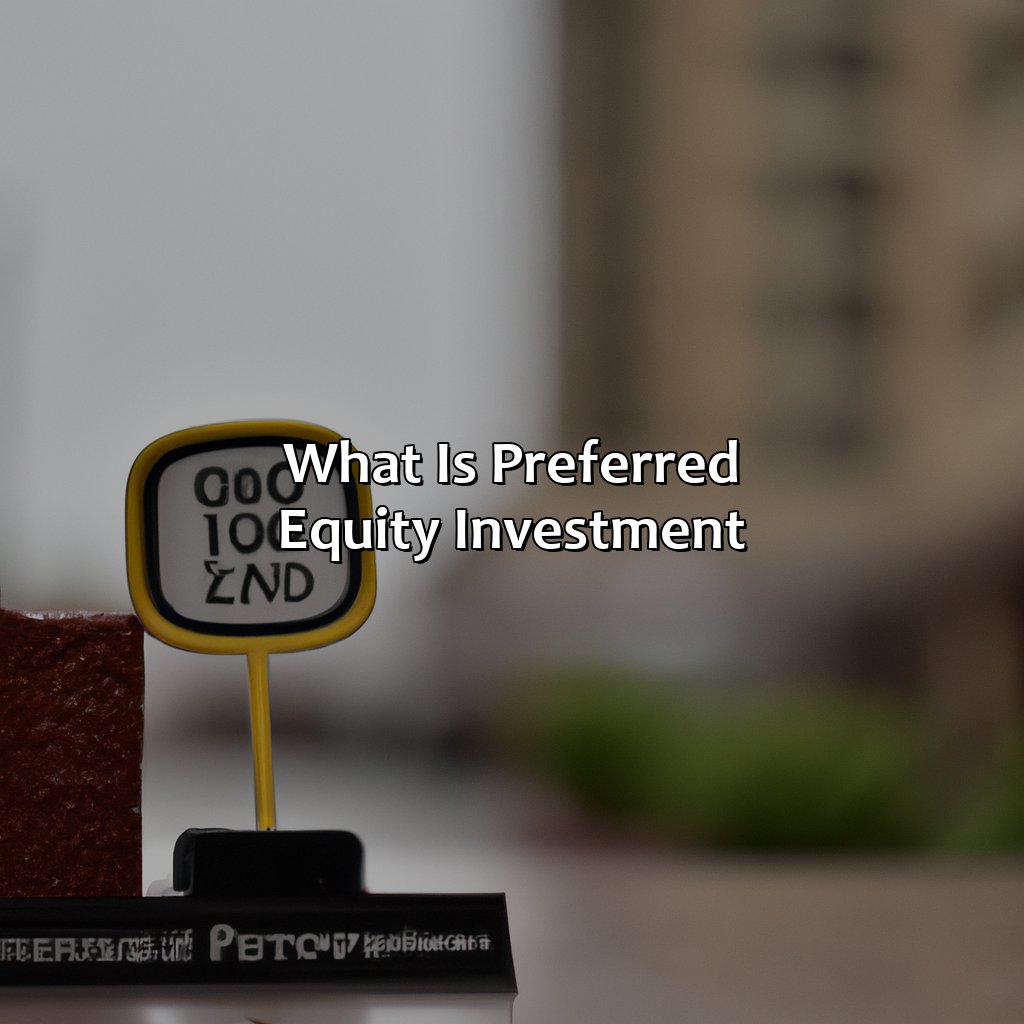What Is Preferred Equity Investment?
Key Takeaway:
- Preferred equity investment is a form of financing where investors receive preferential treatment over common stockholders, including fixed dividend payouts and seniority in case of bankruptcy. This makes it an attractive option for companies looking for funding without sacrificing control.
- Preferred equity shares can also be convertible into common stock, providing flexibility for both the issuer and the investor. This feature allows investors to potentially benefit from a company’s growth and success while also providing downside protection in case of underperformance.
- While preferred equity investment offers many benefits, it also comes with risks, including limited liquidity and the potential for significant loss of value in times of economic downturns. It is important for investors to carefully evaluate the risks and rewards before investing in preferred equity.
Are you looking for alternative ways to increase your portfolio’s returns? Preferred equity investment is one of the most attractive options available. With this approach, you can benefit from the potential of stock market returns, without being exposed to the same level of risk. Learn what preferred equity investment is and how you can benefit from it.
What is Preferred Equity Investment?
Understand Preferred Equity Investment. Learn its definition. Discover how it works as a solution. Uncover the unique securities which combine debt and equity. These are popular with investors.
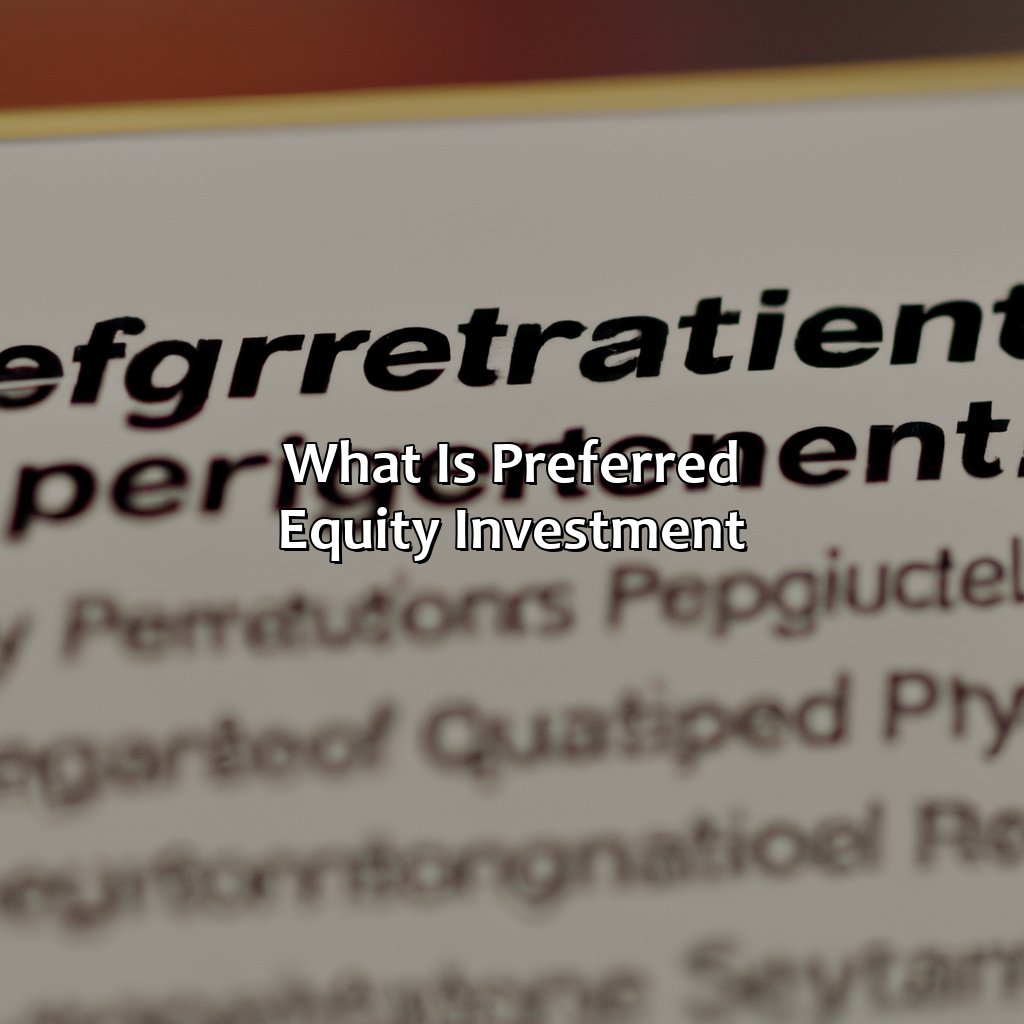
Image credits: retiregenz.com by Adam Duncun
Definition of Preferred Equity Investment
Preferred Equity Investment: A Comprehensive Guide
Preferred equity investments are an alternative form of financing that offers a hybrid of characteristics from both debt and equity securities. Preferred equity investors typically receive both fixed income payments and priority over common equity holders in the event of bankruptcy or sale. Unlike traditional bonds, preferred equity investments do not have a fixed maturity date and can fluctuate in value based on market conditions.
Moreover, unlike traditional stock ownership, preferred equities can provide stable income streams to investors. They are often used by startups and venture capitalists to raise funds because they allow for greater flexibility than traditional bank loans with fixed repayment schedules. In essence, preferred equity investments offer the best of both worlds: stability and high returns.
One significant difference between preferred equities and common stock ownership is that there is limited voting power associated with preferred shares. Also, while common shareholders benefit when a company distributes profits through dividends, dividend payments on preferred shares are usually at fixed rates.
Lastly, preferred equity investment was first introduced in the late 1800s as a way to enable corporations to expand without offering new classes of common stocks. Over time it evolved into one of the most popular alternative financing options available to companies seeking more flexible financing solutions beyond conventional bank loans.
Why settle for just being a shareholder, when you can be a preferred one? It’s like being the VIP of investments.
How Preferred Equity Investment Works
Preferred equity investment is a method used by companies to raise funds from investors in exchange for partial ownership and rights to dividends. Investors who invest in preferred equity receive priority over common equity shareholders when it comes to payment of dividends or liquidation proceeds. These investments are structured as a form of hybrid security, mixing elements of both debt and equity investment.
The primary advantage that preferred equity offers for companies is that they are not required to pay fixed interest rates on the funds raised, thereby reducing their financial burden and increasing their flexibility. Additionally, investors may find preferred equity investment attractive because they receive higher yields than traditional bonds while enjoying the upside potential of ownership in the company.
It is essential to note that preferred equity owners do not have voting rights on corporate decisions, which makes them different from common stockholders. Furthermore, these investments have unique terms such as call provisions and convertibility options. Call provisions allow the issuer to repurchase preferred shares at a predetermined price while convertibility options enable conversion into common shares at any time specified by either party explicitly.
Overall, Preferred Equity Investment can be an attractive alternative for both companies looking to raise capital and investors looking for high yields with downside protection.
Investors who want consistent returns on their money should consider adding Preferred Equity Investment as part of their diversified financial portfolio. They stand to benefit from potentially higher yields relative to other assets while protecting themselves from risks associated with common stock investments. Fear of missing out on this lucrative investment opportunity should motivate action towards understanding how Preferred Equity Investments work.
Preferred equity is like being the cool sidekick in a superhero movie, you may not get top billing but you still get a cut of the action.
Features of Preferred Equity Investment
Want to know the perks of investing in preferred equity? It’s got fixed dividends, higher ranking than common stock, and it can be converted. Perfect for those looking for regular income or wanting to protect their investment in case of bankruptcy or liquidation.
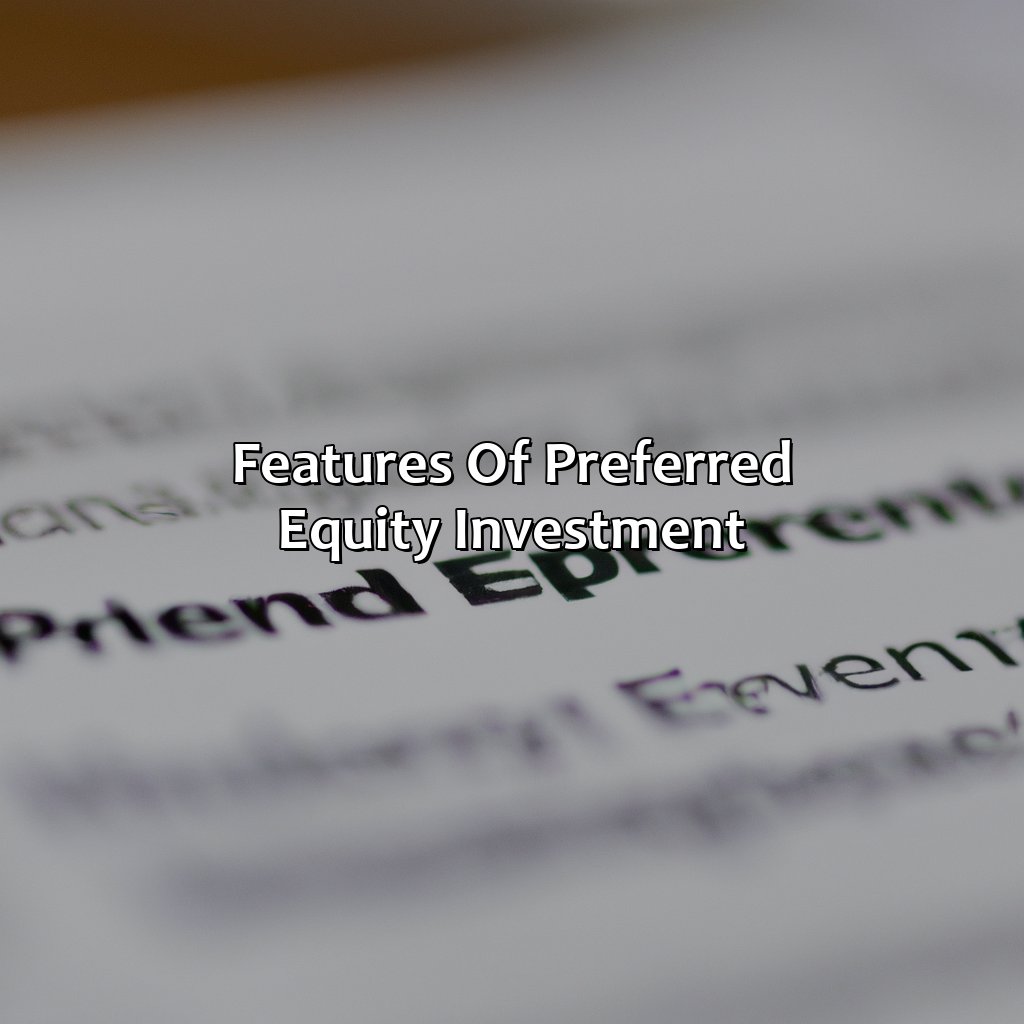
Image credits: retiregenz.com by David Duncun
Fixed Dividend Payouts
Investors who choose preferred equity investment are entitled to a stable and consistent source of income through a unique form of dividend payout. This form of dividend payout ensures a fixed rate of return, which is not affected by the fluctuations in the market, offering investors a degree of financial security.
The fixed dividend payouts of preferred equity investments refer to dividends that remain constant and are paid out regularly to investors. In contrast to common stocks, which provide variable dividends depending on the company’s performance, preferred equity dividends provide investors with a predetermined payout amount. This guarantees a steady stream of income for investors. The stability and predictability associated with fixed dividend payouts are essential features that make preferred equity investments an attractive option for conservative investors.
One unique feature worth mentioning is that in some cases, if the company cannot pay its dividend in a particular year, they must make it up before paying dividends to common stockholders. This ensures that Preferred shareholders receive their dividends before any payments go towards more volatile common shares. This provision provides excellent protection for Preferred Stocks’ owners as it secures their returns while trading off potential capital gains against guaranteed income.
A prime example of using preferred equity investment structures dates back to 2012 when Berkshire Hathaway invested $5 billion into Bank Of America via BAC’s preference shares in exchangeable for regular shares at $7.14 per share—a deal made amidst unprecedented market turmoil driven by dovish policy from most major central banks as they tried emerged from the Global Financial Crisis (GFC).
Preferred equity: the older sibling that always gets priority, leaving common stock to fight for scraps like the youngest child at the dinner table.
Seniority over Common Stock
Preferred equity investors hold a higher priority position compared to common stockholders in terms of receiving their investment back in case of liquidation or bankruptcy. This indicates the seniority that preferred equity investment holds over common stock when it comes to repayment.
Furthermore, preferred equity usually has a fixed dividend that needs to be paid before any dividends are distributed to common stockholders. In this way, preferred equity holders also have more financial stability than common stockholders.
The unique detail about seniority over common stock is that it provides investors with a cushion against potential losses and minimizes risk. As an investor, you need not worry as much about market fluctuations or volatility due to the seniority that your preferred equity holds.
In history, during the 2008 financial crisis, investors who held preferred equity were able to weather the storm better than those who held only common stocks. This illustrates how important seniority over common stock can be for investors looking for stability and protection against market volatility.
Preferred equity – the only investment that allows you to have your cake and eat it too, by offering the option to convert to common stock whenever you please.
Convertibility
Preferred Equity Investment offers the option of converting shares into another type of security. This feature makes it an attractive investment prospect for many investors, as they have the flexibility to switch to a different security at a later stage. The conversion can be triggered by various events such as an initial public offering (IPO) or mergers and acquisitions (M&A).
Convertibility is significant because it can provide investors with greater liquidity and higher returns.
One of the primary advantages of convertibility is that it allows investors to hedge their investments. Investors can make changes based on market conditions rather than sitting on non-performing securities. Additionally, converting preferred stock to common stock may also provide better capital appreciation potential, which may result in increased gains if the company performs well in the future.
It’s worth noting that while convertibility provides investors with greater flexibility, there may be additional dilution risks if conversion takes place. Dilution risks refer to decreasing value because existing shareholders’ ownership percentage gets decreased when more stocks are issued. This downside must factor into an investor’s decision-making process before investing in Preferred Equity Investment.
A convertible preferred stock was first introduced when Delaware-based DuPont Company offered its employees this unique investment opportunity in 1939. Since then, Convertible Preferred Equity Investments has become increasingly common among startups and private companies looking to attract sophisticated capital from investors who seek liquidity enhancement, diversification benefits without sacrificing returns potential.
Preferred equity investment: where you get to be part-owner without the hassle of actually owning a portion of the company.
Benefits and Risks of Preferred Equity Investment
Understand preferred equity investments. To make an educated choice about preferred equity investments for your financial goals, learn the potential advantages and risks. This section dives into the benefits of preferred equity investments. Plus, the risks to consider when making this investment.
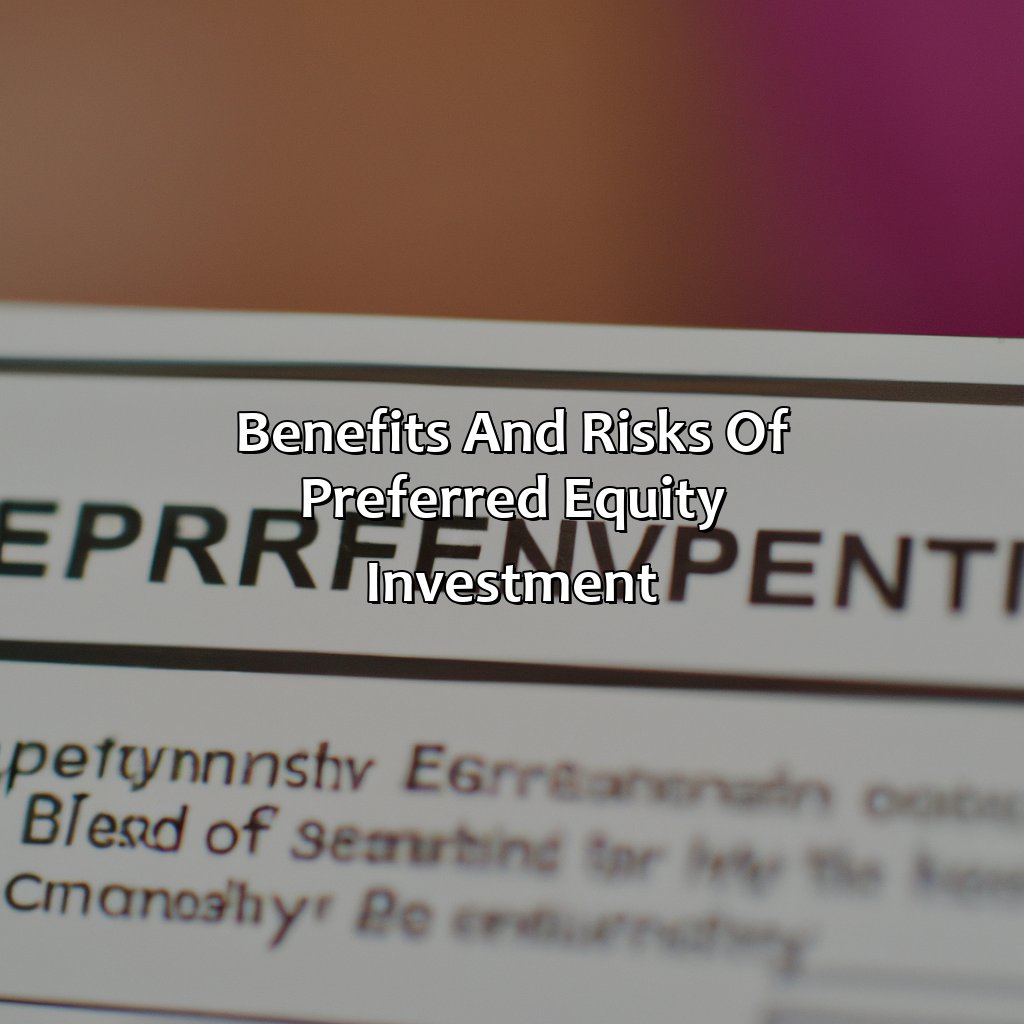
Image credits: retiregenz.com by Harry Woodhock
Benefits of Preferred Equity Investment
Preferred Equity Investment offers several advantages to investors and companies alike. Here are some of the benefits that make it an attractive investment opportunity:
- Priority over common stockholders, giving them preferential treatment during bankruptcies
- No obligation to repay dividends and interests if it violates the terms of contract
- Higher returns compared to bonds or traditional stocks due to higher risk
- No dilution of ownership stake as preferred shares are not exchangeable for common shares
Furthermore, Preferred Equity Investment allows companies to tap into funds without increasing their interest-bearing debts. Additionally, preferred equity holders often have voting rights on corporate matters such as mergers and acquisitions.
Pro Tip: Before investing in preferred equity, it’s essential to understand the terms of the contract and the company’s financial health.
Don’t let the word ‘preferred’ fool you, investing in equity can still be a risky business.
Risks of Preferred Equity Investment
Judging by the nature of preferred equity investment, possible downsides exist that warrant consideration. Among the risks associated with such investments include the possibility of facing issues such as dilution or complete loss of equity value. Furthermore, investors are often exposed to some adverse fluctuations in market conditions that could affect their returns negatively. These dangers, amongst others not mentioned, should be seriously taken into account before participation.
Investing in preferred equity can be a tricky affair for investors since they typically have limited or no control over the decisions made by management teams in charge. The mode and manner of operations along with unforeseen circumstances may lead to unfavorable outcomes, reducing anticipated gains. Participation in preferred equity also involves higher costs because of higher minimum investment requirements as well as liquidity constraints.
It is crucial to consider the legal structures governing these investments that provide more leverage to companies and issuers when company ownership facts are unclear. Understanding preferred stock dividends and other associated terms before investing lowers uncertainty when faced with such issues. In this way, one can make informed decisions when presented with different options based on solid reasoning.
Moreover, it is essential to keep an eye out for new trends and laws particularly surrounding securities in different states before committing funds to any particular security on offer. This way, there will be less surprises while minimizing due diligence costs incurred throughout the process.
Reports show that instances where companies issuing preferred stocks tend towards excess leverage feature heavily among regrettable cases encountered recently regardless of maturity levels held in funds saving accounts. Management decisions had been carried out without adequate assessment of the operating environment leading to negative effects on earnings ratios due to unanticipated expenses. More prudence should be employed going forward.
Put your money where your preferences are with preferred equity investment – it’s like being the favourite child in a family business.
Examples of Preferred Equity Investment
To grasp the varied examples of preferred equity investment in businesses, you need to explore deeper. To make a wise decision regarding your investments, it’s key to compare preferred equity investment to other investment types. We’ll quickly glance over both of these topics in this section.
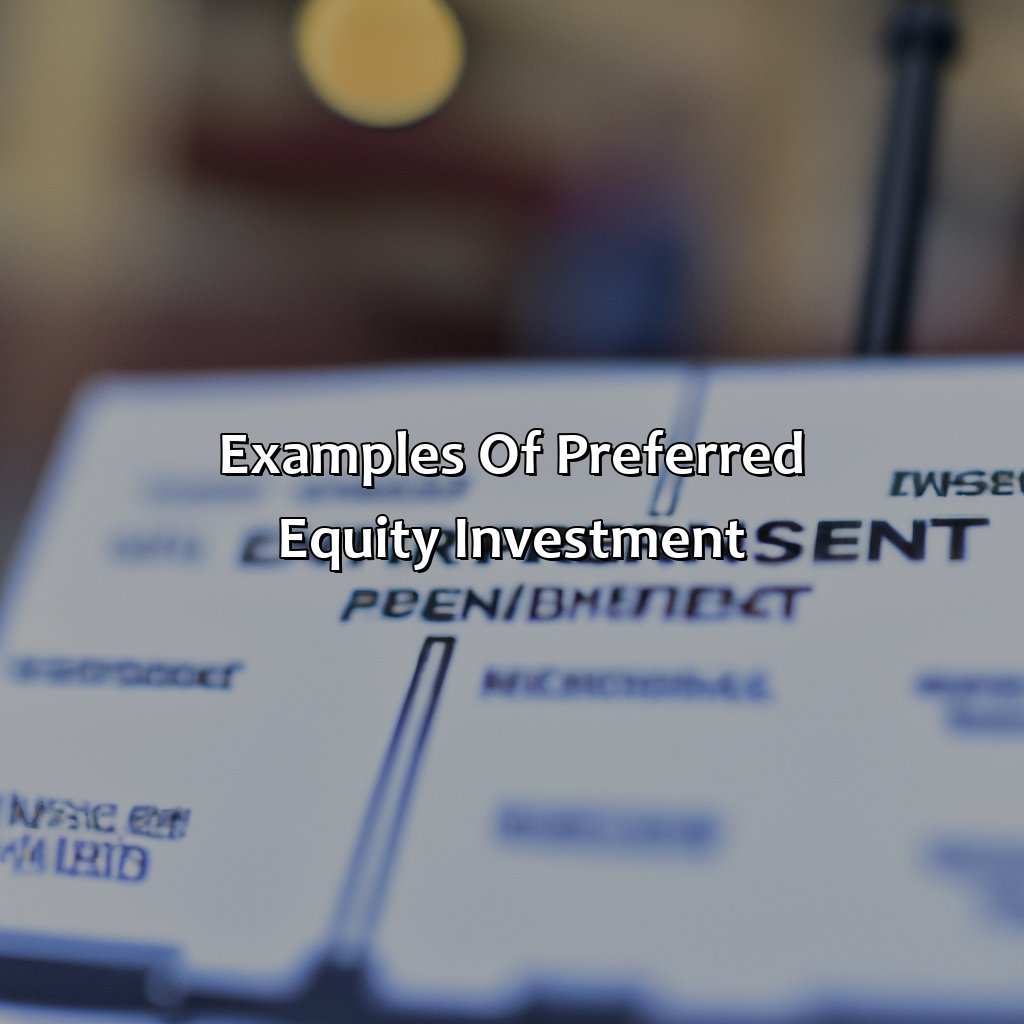
Image credits: retiregenz.com by James Washington
Types of Companies that issue Preferred Equity Investment
When it comes to the different forms of equity investment, preferred equity investment is a unique option that many companies consider. As it offers a different set of benefits compared to common stocks or other types of investments, it’s slowly gaining popularity among businesses. Here are five types of companies that issue preferred equity investments:
- Startup Businesses: Startups with high growth potential but limited capital often use preferred equity as a way to attract investors without sacrificing too much control over their company.
- Real Estate Companies: Real estate investment trusts (REITs) commonly issue preferred stock as a way to raise funds for new development projects and acquisitions.
- FinTech Firms: Many FinTech firms have taken advantage of the digital nature of preferred stocks by offering innovative ways for investors to access them.
- Manufacturing Companies: Manufacturing businesses often use preferred stock as a means of generating revenue while maintaining ownership and management control.
- Pipeline Partnerships: Pipeline partnerships typically issue preferred units as a way for investors to participate in the partnership’s profits without taking on additional risk.
It’s important to note that not all companies can or should issue preferred equity investments. While some startups or established businesses may find it beneficial, it’s not always the best fit for everyone.
Interestingly, many companies may also choose to issue both common and preferred stock simultaneously. This practice may come in handy particularly if they need funding quickly and from various sources.
The history of preferred equity investment dates back centuries when Dutch merchants developed a method called “preferred shares.” Originally known as “preferred debt,” this financial instrument soon became popular throughout Europe because it allowed investors and creditors more rights than traditional shares or bonds. With its growing appeal over time, many countries adopted similar approaches with their own laws governing issuance and trading in order to maximize these options for their respective economies.
Investing in preferred equity is like having a VIP pass to the concert, while common equity holders are stuck waiting in line.
Comparison to Other Investment Types
In comparison to other types of investments, Preferred Equity Investment offers several distinct features. For instance, preferred equity investors have priority over common shareholders for dividend payouts and may have a greater say in company decisions.
The following table compares the Risk Level and Potential Return associated with different investment types:
| Investment Type | Risk Level | Potential Return |
|---|---|---|
| Stocks | High | High |
| Bonds | Low to Medium | Low to Medium |
| Real Estate | High | Medium |
Apart from the prioritized payouts, preferred equity investment typically carries lower risk than stocks and real estate investments. However, it also offers less potential for high returns compared to these other alternatives.
It’s crucial to note that not all companies offer preferred equity investment opportunities, the ones that do might benefit from lower interest rates on debt financing.
Interestingly, according to Reuters, there has been a notable rise in Preferred Equity Investment transactions in recent years as more investors seek ways to diversify their portfolios while enjoying better security.
Some Facts About Preferred Equity Investment:
- ✅ Preferred equity investment is a type of investment in which the investor receives preferential treatment over common stockholders, such as a higher dividend payout or priority in liquidation. (Source: Investopedia)
- ✅ Preferred equity is usually a lower risk investment compared to common stock because it offers fixed dividends and a steady income stream. (Source: The Balance)
- ✅ Preferred equity investments can be found in many industries, including real estate, technology, and finance. (Source: Pitchbook)
- ✅ Investors can buy or sell preferred equity through public or private markets. (Source: The Motley Fool)
- ✅ Preferred equity investments often have a call provision, which allows the issuer to redeem the shares at a specific price after a certain period of time. (Source: Forbes)
FAQs about What Is Preferred Equity Investment?
What is preferred equity investment?
Preferred equity investment refers to a type of investment in which an investor puts money into a company in exchange for preferred stock. This stock offers certain advantages over common stock, such as priority in receiving dividends and priority in receiving proceeds in the event of liquidation.
How does preferred equity differ from common equity?
Preferred equity differs from common equity in a number of important ways. Preferred stockholders have priority over common stockholders in receiving dividends and receiving proceeds from the sale of the company. Additionally, preferred stock typically does not carry voting rights, which are reserved for common stockholders.
What are some advantages of investing in preferred equity?
There are several advantages to investing in preferred equity. These investments often offer higher dividends than common equity, and they also provide more security in the event of a company’s bankruptcy or liquidation. Additionally, preferred equity investments may offer the potential for greater returns than bonds or other fixed-income investments.
What are some risks associated with investing in preferred equity?
Like any investment, there are risks associated with investing in preferred equity. For instance, the value of the stock may decline in response to changes in the company’s financial health or broader market conditions. Additionally, investors may be exposed to credit or default risk if the company fails to meet its obligations.
How can investors evaluate preferred equity investments?
Investors should evaluate preferred equity investments using a number of criteria, including the company’s financial health, its credit rating, and the overall economic environment. It is also important to carefully review the terms of the preferred stock, such as the dividend rate, callable provisions, and other features.
How can investors go about investing in preferred equity?
Investors can invest in preferred equity through a variety of channels, such as mutual funds, exchange-traded funds (ETFs), or through direct purchases from individual companies. It is important to carefully research the available options and select investments that best match individual investment goals and risk tolerance.
